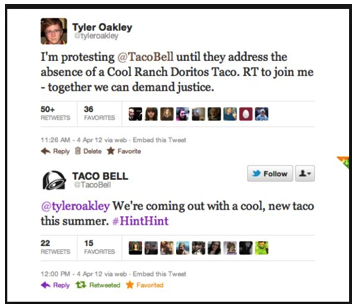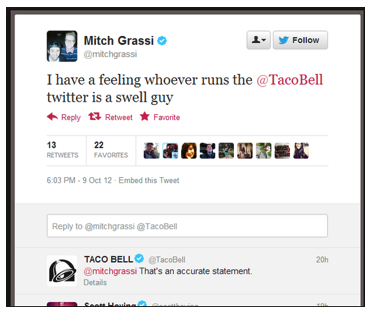Make sure you read
Uncover & Monetize Your Inner Genius. Part 1. (Quiet the Inner Critic) Here is where the fun begins. For some of us, it may be where the scary part begins...
acknowledging the Inner Genius. I often hear, "I know my purpose. I am going to pursue it. I am taking the steps towards it, and it scares me". I'd like to redefine what you are feeling.
We are not scared. Instead, we are sensing the grand expression of our soul. We are not afraid; we are excited.
The first time I felt something similar to this was while hiking Roraima in Venezuela. Roraima is a Tapui, a flat top mountain, home to unique flora & fauna, resembling pre-historic times. This mountain is the inspiration for "The Lost World" and is also featured on the Pixar movie "Up."
We had been leading up to this hike, took a bus ride for over 20 hours (I had never been on a bus for two hours, let alone across my country), packed all food, gear, and courage to take this 5 day back packing excursion. We hiked for two days on dry and hilly terrains for long stretches, and from a distance we could see Roraima.
I remember the afternoon before the straight climb, setting camp at the base of the mountain admiring the beauty of the untouched habitat that surrounded me. In the morning, we began our climb, and all of a sudden it hit me; I could feel the power, the awe inspiring Presence of the spirit of this mountain. It could have looked as fear, as I scrambled hand over foot with a heavy backpack, but in that moment, I could sense the difference.
Awe-inspiring.
That, my dear friend, is what we are probably feeling at the notion that we could actually uncover our genius, and create a life that revolves around our beautiful gift, and that this gift supports us, inspires and serves those ready to receive.
1. Naming the Dharma : The Life Purpose that pours out of our every cell. Before we think this exercise is about finding a job we are going to do, I want to set our expectations straight. Our Dharma, our beautiful life purpose is NOT about a job, it is about a resonance. It is about emanating who we are with every ounce of ourselves, with everything we say, write, touch, and breathe. Yes, this Dharma is not about a store we will open, or a service we will offer. It is about us OWNING the brilliance of who we each are.
It is about confidence, and that we are fully supported in creating our life's work and purpose (yes, much comes up with this piece). Our doubts arise, our fears perk up, and so I advise us to go back to the solutions (
EFT,
Presence, or
Karma Healing) in order to eliminate the unconscious patterns we have been running.
Naming the essence we wish to embody more of allows us to anchor that resonance, and allows us to have something hopeful and powerful to move towards.
If we are an entrepreneur, we may feel slightly overwhelmed, have a lot of interests, and feel confused by the unlimited choices. Well, that's not necessarily bad. Some of us have more dimensions than others, and our curiosity inspires us to explore the deepest, most interesting corners of life through our career choices.
We may feel like we should be ONE thing, but if we were ONE thing, we would probably not be reading this. We are probably unsatisfied with fundamental pieces of our business, resentful that we are trading time for dollars, reluctantly giving our clients what they want, but not truly digging to clarify and own the desires that lie beneath to include the great service we are intended to perform in the planet.
Or maybe we fall in the camp of not yet being self-employed and are feeling lost in a 9-5 job, questioning the 401K, moving up in an industry we see minimal value in, and our five year plan is set on track, but the notion of slaving away another month building someone else's empire, seems depressing.
Now is the time to give ourselves permission to be something, someone else. We can now offer us the space so that WE can give ourselves the permission to be multi-dimensional, and a heck of a lot more interesting than our linear, corporate ladder lover friends, and free to enjoy life.
Homework Check the Dharma types you connect to the most: this Dharma concept is original to
John Wyrick Mother Teacher Healer Merchant Priestess Matriarch Sister Politician
Humanitarian Mystic Herbalist Dancer Yogi/ni Midwife Artist Artisan
Weaver Gardener Seamstress Writer Editor Author Publisher Leader
Tinkerer Architect Philosopher
Note: This is not the full list, but it can serve as a start for you...
Now, please select from the circled ones, the top 2-3 Dharma types that MOST calls in this moment. List them:
1.
2.
3.
Allow yourself to select from a place of being in the NOW.
Do not choose based on what you think you should select or what you have been up to this point. Allow this document to be a vessel of your truth. Allow me to walk you through, even if just with my written words, the truth that you seek within, and the truth that you are ready to own about who you really are.
I invite you to trust this powerful uncovering process. Even if you feel like you have already done this, let yourself do this work as if it was the first time, and as if the answers will transform your life, your work, and your business. I trust it because I have seen the power of this uncovering, and I have seen what happens to women who start owning their Dharma type. You could include an example here of one of the most dramatic pieces of transformation you have seen, to transition from talking about other ladies, to actually addressing the reader "you." Even if you do not fully understand it, there is power in you and I collaborating for the sake of upgrading your life, your genius, and your abundance. And yes, we will get to the abundance piece soon. It is as if a vortex of intention and focused energy are placed before us to take in and fly with it.
2. Friends Tell Me I'm Great At... This may or may not connect to your Dharma type, depending on whether there exist any patterns of being sacrificial. Sometimes we play roles that are about diminishing our light, but I am not talking about that. I am not talking about the destructive patterns we used to engage in. I am talking about the patterns that everyone around recognizes we possess, and they seek us out for it, even if they don't always love what we have to say or do. They somehow know we are brilliant at this. For instance, if our younger sister wants to prove that she can have a garden in her New York City apartment, and we are good with plants. She then comes to us, begrudgingly, because her plants are dying. We give her the magic touch pointers and her plants thrive. She deeply understands our talent, but to us it is second nature.
It could also be that our best friend avoids us because every time we talk, we make her face her stuff, and she just wants life to be light and fun. But, when the overwhelming nature of reality takes over (as it can do for everyone at times), and she knows she has to shift, we are the person she reaches for to text or even to call.
What you are great at could also be work related; people recognize our talent with negotiations, even if they hate our lack of attention to detail.
Know that others are always going to be triggered or have an opinion about our gifts. That, my friend, never changes. We may be teased in a fun loving way, but the day will come when someone will downright offend and call us a name because our genius rattles their existence, and maybe even their own genius within gets a little disturbed by the transparency of who we are.
Basically, we may always piss people off, no matter what we do. So we might as well accept the talents people naturally see in us, tainted or not. The talent is there. We know it, and they know it.
3. What can you monetize? I remember a time in my life, when I knew that my talent was solidly grounded in helping people make a good living through a combination of healing their self-limitations and providing them with the right business tools. Yet, I was not bringing in the income I wanted.
I didn't necessarily think it had to do with worth, because I had been making a decent six figure income in a corporate environment, and I did not have problems getting people to hand me a $1 million dollar purchase order. But, when it came to my passion, my work, I had a lot of mixed feelings. As people devoted to the transformation of the planet, we have been fed a lot on whether we have the right to charge for spiritual, artistic, or educational services. You name it.
If it has a heart, we have been programmed to offer it up for free.
This, my sweet friend, is keeping us from playing in the big leagues, requiring us to pinch pennies, and maybe even having to move into our parent's basement. Not fun. Ok, maybe it's not that bad, but why receive income from something that does not fill us up in the soul-fulfilling way that working from our heart's desire would? Why would we shun the very thing that nurtures our existence in order to make a living?
Heart-based Worth.
Can we start activating this for ourselves? Could we accept that our heart is big and wide, and that our income ought to reflect that. Could we? I think so.
Nitty-gritty:
So, let's start getting real about the Dharma types that could easily support you.
Let's keep it practical, but not so practical that we cannot access possibilities beyond what we can see or know about.
Recently, I shared that I had signed on a $50K/year client. This was an upgrade for my business and for my work. People who I shared with could not believe that in less than a year, I created a six-figure income working very part time and raising two spirited daughters.
Anything is possible if you are ready to invest your energy in refining your Dharma and have access to the right tools to get you there. Look at this as the beginning of that journey.
Without too much overthinking, list the 2-3 Dharma types that you circled in the first Dharma type exercise.
Dharma types I can monetize: Do any of these overlap with the "Friends tell me I'm great at..." Dharma types?
It's ok if they don't.
Beginning the honest exploration of our gifts is a power initiation. You are not alone, and it is important that you connect with a group of people who can support you on this journey. You deserve to be supported.
Be on the lookout for Part 3 of this Uncover & Monetize Your Inner Genius!
Love
ASHA
Soul + Business. Perfectly Together. Join this
FREE training that will walk you through the step-by-step to Uncovering & Monetizing Your Genius?
-- This feed and its contents are the property of The Huffington Post, and use is subject to our terms. It may be used for personal consumption, but may not be distributed on a website.
![]()
![]()
![]()
![]()
![]()
![]()
![]()
![]()

































